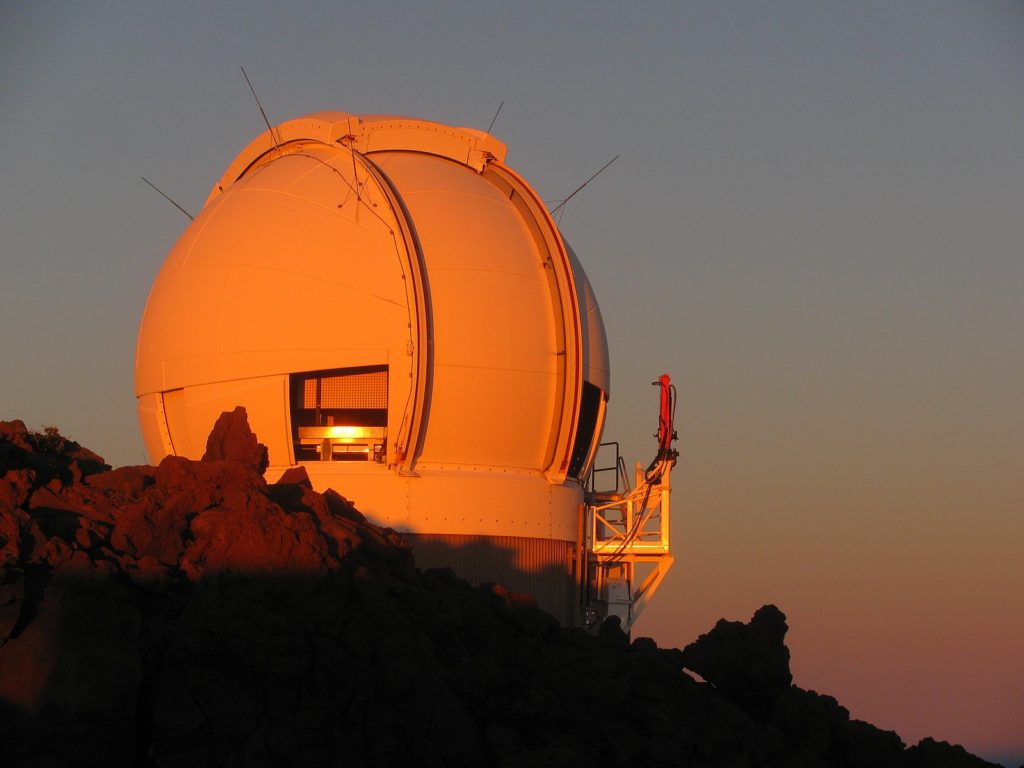On the island of Maui, lassoed by the Pacific Ocean, hikers are not the only ones stargazing. The Pan-STARRS1 telescope scans the sky from the island each night with a primary mission to detect moving celestial objects, especially ones hurtling near Earth. The telescope crouches near the summit of the 10,000-foot Haleakala volcano. Equipped with one of the world’s largest digital cameras, on a good weather night it can image a total of 1000 square degrees of sky. The telescope transfers its images through a high-speed data connection from Maui to the University of Hawaii Oahu campus for analysis. On the night of October 19, 2017 an unknown moving object was detected by Planetary Defense Researcher Robert Weryk. He observed for the first time ever an object of interstellar origin enter our solar system.
Weryk told me recently in an email that he has not seen anything like ‘Oumuamua since that night in October of 2017. “With good weather we can detect well over 10,000 asteroids in a single night, but most are known objects from the main asteroid belt.” He said on average they find two or three Near Earth Objects (asteroids that come close to the Earth) per night.
Upon the initial sighting Paul Chodas, manager at the Center for Near-Earth Object Studies (CNEOS) in Pasadena, California said: “We have been waiting for this day for decades. It’s long been theorized that such objects exist – asteroids or comets moving around between the stars and occasionally passing through our solar system – but this is the first such detection.”

